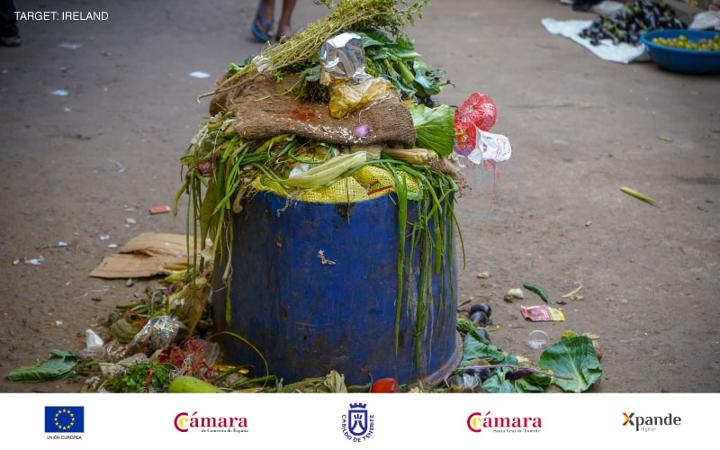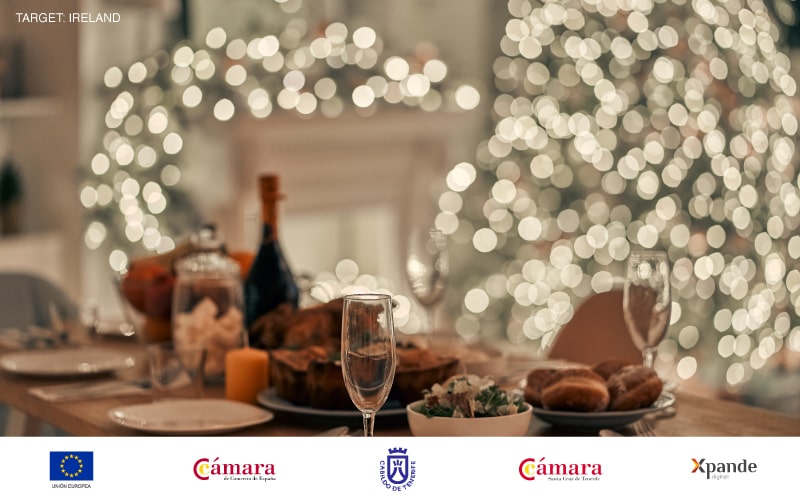Christmas is here and, with it, the season of get-togethers with friends, company dinners, reunions with old students, family celebrations... In short, the perfect excuse to go on a non-stop eating spree for almost a month
Obviously, this excess of food (as is to be expected at this hyper-consumerist time of year) translates, especially in households, into an increase in food waste. If food waste is already responsible for 1/3 of the planet's greenhouse gas emissions on a day-to-day basis, due to its socio-economic and environmental consequences, and is an issue that should be of great concern to us, at Christmas it becomes a real nightmare.
According to a study carried out in 2021 by Too Good to Go, an app against food waste, Spanish households end up wasting between 10 and 20% of the food that is bought and cooked for the Christmas holidays. To make matters worse, more than 40% of the people surveyed acknowledged that they bought food that they didn't even like - I'm sure they were referring to sugared almonds, we have no proof but no doubts either - just because they are a tradition.

How can we avoid wasting food during the holidays (and the rest of the year)?
PLANNING: we know we repeat ourselves a lot on this subject, but planning is the key to avoiding unnecessary waste :
1. Make room in your fridge and freezer: check, organise, cook or write down what you have that can be used during the holidays. The idea is, on the one hand, to avoid unnecessary purchases of ingredients that we already have at home and, on the other hand, to have space to store leftovers. :)
2. Simplify. You don't need 500 starters and 7 desserts. Most of the time people buy on "impulse" and out of fear that there won't be enough variety or quantity, when in reality there almost always ends up being more than enough. If every year there end up being plenty of polvorones left over, should we really buy them for another year or buy a whole box? Wouldn't it be better to buy less, preferably in bulk, or make them ourselves?
3. If you are the host, prepare a menu in advance, estimating the approximate quantities and adjusting the portions according to the number of people who are going to be there
4. Make a list of ingredients and stick to it. And not for nothing, but if you buy in bulk you have the advantage that you can buy just the amount you need, saving money and avoiding waste.
5. Make the most of your leftovers. Freeze them, store them in the fridge - which is why we've made room for them beforehand - or use them to make recipes to make the most of them (in a word: CRO-QUE-TTES).
RESPONSIBLE CHRISTMAS MENU
1. Have ONE main course, with one or two side dishes. Avoid starters (especially canapés and other appetizers with dough, which are quickly spoiled) or offer a wide variety of desserts (maybe it's time to assume that the only nougat you like is the chocolate one).
2. Prioritise local products over those that are not (and if it is small shops instead of large supermarkets, all the better).
3. Recover traditional dishes, made with seasonal products; which is associated with a lower carbon footprint, a smaller water footprint and, in short, less environmental impact.
4. Increase the amount of vegetable dishes and reduce or minimise meat, fish or seafood dishes (we are not saying that you should go vegetarian or vegan, but that there should be more vegetables on the table).
5. Save energy by planning your preparations and cooking several dishes at the same time. If, for example, you have to use the oven, take the opportunity to put more than one tray in at a time. Opt to use the express cooker, which reduces cooking times by up to half, or simply use a lid when cooking (which can save 25% in energy).
RECIPE IDEAS FOR MAKING THE MOST OF LEFTOVERS
1. Onion soup, but instead of using water, use a broth made from vegetable skins, leftover meat, bones, fish or seafood heads (aka sopa de raspas). You can also use bread from the day before without any problem, as it will soften with the broth. NOTE: if you don't eat cheese, you can substitute it with its vegan alternative or simply not add it.
2. Cream soups, stir-fries or curries "cleaners": basically, take all the "leftovers" and put them together to create new dishes.
3. Cannelloni, you can fill them with practically anything, which makes them an ideal recipe for using any leftover ingredients from the previous day
4. CROQUETTES: THE QUEEN OF RECIPES FOR MAKING THE MOST OF THE DAY'S LEFTOVERS. They can be made with practically anything and, let's face it, WHO DOESN'T LIKE CROQUETTES?
5. Quiches, empanadas o pies are also a great option for making the most of them.
6. Vegetable fritatta, a very simple recipe in which you can use all the vegetables that have been left in the fridge.
7. If you have leftover grapes on the 31st and don't know what to do with them, you can prepare this couscous as a starter or garnish for the following day.
8. Express pickles with cucumber, carrot, onion, radish crudités...
9. Sandwiches and/or sandwiches "Ross Geller" style (if you don't lose your head, all the better)..
10. Torrijas de roscón de reyes (recipe in the near future).
By starting with simple actions such as making the most of what we already have at home and avoiding food waste, we are helping our carbon footprint and our wallets. It's a win-win situation, so what are you waiting for to put your responsible Christmas menu into practice?
